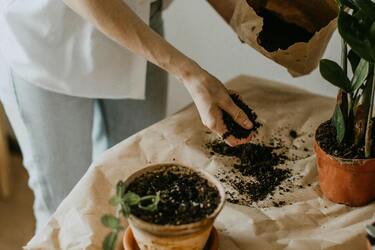Named the main mistakes when transplanting indoor flowers

Repotting indoor plants is an important measure to allow them to grow healthy and blooming. However, it is important to know when it is best to do this procedure so as not to harm the plant.
The optimal time to transplant indoor plants is in the spring. At this time, plants come out of dormancy and begin to grow actively. The root system also begins to actively develop, and the plant better tolerates transplantation, writes Floren.
Read also: Will grow faster and healthier: how to make your own fertilizer for orchids
If you can not transplant the plant in the spring, it can be done at any time of the year, but only if you save the earth clod and do not damage the root system. This method of transplanting is called transplanting. The new pot for the plant in this case should be a few centimeters in diameter more than the previous one.
It is not worth transplanting flowers at the time when they throw out their inflorescences. This will cause buds, ovaries and already opened florets to fall off. It is also not recommended to arrange this measure during stress or disease of the plant, caused by rotting of the root system. Repotting in such cases can drastically worsen an already difficult condition.
Do not disturb your plants during the dormant period, when there is no rapid growth of roots, which will not be able to recover quickly from damage.
Gardeners said what you can not do when transplanting flowers
A new pot for indoor plants should not be too big. It should be only 2-3 cm larger than the previous one. If the pot is too large, then the above-ground part of the plant will stop growing, as its roots will fill the volume of soil. In addition, the plant will not be able to assimilate all the water, because of which the roots will begin to rot, and then the trunk.
It is not possible to immediately make fertilizers when transplanting. This is done only 2-3 weeks after transplanting the plant. New soil contains enough nutrients.
Winter transplanting is also forbidden, because most plants are in a state of rest. Transplanting is a big stress for them. It is allowed to transplant if the plant is flooded and begins to rot, if there are pests in the soil.
Recall, we have already written what indoor plants should not be kept at home.
Want to receive the most relevant news about the war and events in Ukraine - subscribe to our Telegram-channel!
